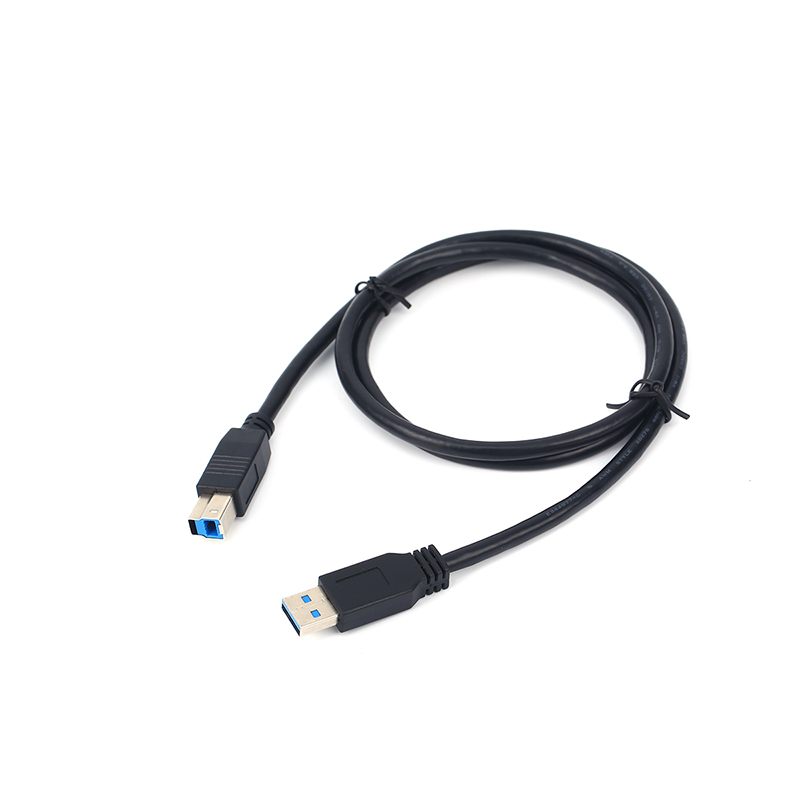I. USB Interface Types
USB interface types are mainly categorized according to their physical form, which can be roughly divided into three categories: USB Type-A, USB Type-B and USB Type-C, each of which can be further subdivided according to size.
1、USB Type-A
Standard Type-A: This is the most common USB interface, usually used for devices such as mice, keyboards and USB flash drives on computers.
Mini Type-A: a miniaturized Type-A interface, now less used.
Micro Type-A: a smaller Type-A interface, also has been gradually eliminated.
2、USB Type-B
Standard Type-B: This interface is commonly used in printers and devices such as monitors with touch and USB ports.
Mini Type-B: A miniaturized Type-B interface, less common now.
Micro Type-B: commonly known as Micro USB interface, commonly used in early Android phones and mobile power and other devices.Micro USB 2.0 and Micro USB 3.0 in the appearance of a slight difference, but Micro
USB 2.0 CABLE can be inserted into the Micro USB 3.0 interface, and vice versa.
3、USB Type-C
Type-C: This is currently the most popular USB interface, support for both positive and negative insertion, widely used in smart phones, tablets and some laptops and other devices. type-C interface not only supports charging and data transmission, but also can be used as a video output interface, so there is a “full-featured C port” called.
Second, the USB transmission protocol
In addition to the physical form of the difference, the USB interface is also based on its transmission speed is categorized, these classifications are often referred to as the USB transmission protocol or version.
1、USB 1.0/1.1
USB 1.0: The original version of the USB interface, the transfer rate is only 1.5Mbps (low speed) or 12Mbps (full speed).
USB 1.1: An upgrade to USB 1.0, retaining both low and full speed modes, but not introducing a higher transfer rate.
2、USB 2.0
USB 2.0 High-Speed: Introduces a high-speed transfer rate of 480Mbps, and is backward compatible with both low-speed and full-speed modes. USB 2.0 is further divided into low-speed (1.5Mbps), full-speed (12Mbps) and high-speed (480Mbps) versions.
3、USB 3.x
USB 3.0 (also known as SuperSpeed USB): Provides a SuperSpeed transfer rate of 5Gbps and is backward compatible with USB 2.0 and below. USB 3.0 has gone through a number of naming changes, such as USB 3.1 Gen 1, USB 3.2 Gen 1, etc., but they all actually point to the same standard.
USB 3.1 Gen 2: Provides a transfer rate of 10Gbps.
USB 3.2 Gen 2×1: Also offers 10Gbps transfer rates, but with updated specifications.
USB 3.2 Gen 2×2: Provides a transfer rate of 20Gbps, the highest speed version in the USB 3.x family.
4、USB4
USB4: is the latest standard for USB interfaces, based on the development of the Thunderbolt 3 protocol, provides up to 40Gbps transfer rate, and supports dynamic adjustment to achieve the optimal use of the environment. USB4 only supports Type-C interfaces, and the naming is very intuitive, direct use of the transfer rate size of the way to name. usb4 There are also higher versions of the USB4, such as USB4 USB4 has a higher version, such as USB4 80Gbps, but it is not yet widely used.
Third, other special interfaces
In addition to the above mainstream USB interface, there are some special interfaces are also worth mentioning.
1、Lightning interface
Lightning interface is Apple's unique charging and data interface, widely used in iPhone, iPad and other devices. The design of this interface is compact and durable, but due to its non-standard nature, it brings inconvenience to consumers. Currently, the European Union has legislated to unify the charging interfaces of portable smart electronic devices such as cell phones by the end of 2024, and Apple has announced that it will comply with this regulation, and all smartphones will be unified to use USB-C charging ports from 2024 onwards.
2, Thunderbolt interface
The Thunderbolt interface is a powerful connectivity standard developed by Intel that provides data, video signals, and charging for laptops through a single connection.The Thunderbolt interface was initially based on the Mini DisplayPort physical connector, but was later changed to the more versatile Type-C connector.Thunderbolt 3 and Thunderbolt 4 have both improved transfer rates and functionality, but devices that support the Thunderbolt interface are usually more expensive and therefore have not become widely available. Thunderbolt 4 offered improved transfer rates and functionality, but Thunderbolt-enabled devices were typically more expensive and therefore not widely available. However, with the advent of USB4 and the opening of the Thunderbolt protocol, Thunderbolt technology is expected to be more widely used in the future.
IV. Summary
USB interface as an important bridge for data communication between computers and mobile devices, the diversity of its types and functions to meet the needs of different devices. By understanding the types of USB interfaces and transmission protocols, we can better select and use the appropriate equipment and cables to improve work efficiency and user experience. With the continuous development of technology, the USB interface will continue to evolve and upgrade in the future, bringing us a more convenient and efficient data transmission experience.



